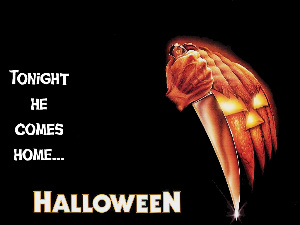
Director: John Carpenter
Writers: John Carpenter, Debra Hill
Starring: Donald Pleasence, Jamie Lee Curtis, Nancy Loomis, P.J. Soles
Rating: R (USA), 18 (UK), R (Australia)
One of the most successful independent movies of all time, and hugely influential to the genre, was John Carpenter’s low budget breakthrough thriller Halloween, released in 1978 to little fanfare but would go on to become a major milestone in horror cinema. Produced for a mere $325,000 by an amateur cast and crew, its impact on not only the genre but filmmaking in general is undeniable and its style and suspense remains unchallenged. Launching the careers of both Jamie Lee Curtis and John Carpenter, Halloween is one of the most important motion pictures of the last few decades.
By the mid-1970’s independent producer Irwin Yablans was searching for a project that he could develop with a small budget and was contacted by Phil Gersh, an agent for a UCLA graduate by the name of John Carpenter, whose first feature, Siege, was in need of distribution. After suggesting a new title, Assault on Precinct 13, Yablans agreed to release the movie through his company, Compass International, and submit it to various film festivals around America and Europe. Upon returning to the States, he contacted Carpenter with a premise for a horror thriller, where a babysitter is stalked by the boogeyman. Immediately sensing the potential, Carpenter began discussions with his girlfriend and producer Debra Hill on a screenplay what would become The Babysitter Murders. Yablans loved the idea and suggested that the film should be set all on one night – Halloween – and that this should be the title as well.
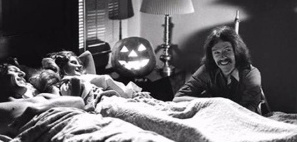
The script centred around the murder of a teenage girl at the hands on her six-year old brother, Michael, who becomes institutionalised, before escaping fifteen years later and returning to his home town to continue his reign of terror. This simple concept would become the standard template of what would become known as the slasher film, though here the clichés felt fresh and effective. Much of the script – from character names to locations – were inspired by personal experiences of both Carpenter and Hill. The antagonist, Michael Myers, was named after an English producer who had helped distribute Assault, while the heroine, Laurie Strode, shared the name of one of Carpenter’s ex-girlfriends. Displaying the director’s love of Hitchcock, one of the pivotal characters, Sam Loomis, was a reference to one from the classic Psycho. Even the location, Haddonfield, took its name from the town where Hill grew up.
Once the script was submitted, Yablans set about raising the necessary funding to produce the picture, eventually approaching Moustapha Akkad, a financier from Syria who sadly passed away from a terrorist attack in 2005. Akkad was hesitant at first, unsure of the talents of the inexperienced director, but he sensed the potential of the story and knew that he would be able to sell the movie. Carpenter walked through each scene with Akkad, explaining his intentions both visually and narratively, which would make a major impression on him. With no more doubts, the project was greenlit and the director set about searching for the perfect cast and crew.
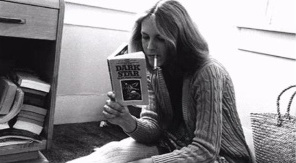
For the role of Dr. Loomis, Michael’s long-term psychiatrist and arch enemy, Carpenter originally approached Peter Cushing and Christopher Lee, both veterans of Hammer, but they declined, though the latter would express his regret when the movie was finally released. Eventually, another British actor was offered the part, Donald Pleasence, who seemed reluctant to accept but was convinced by his daughter, Angela, who was a fan of Assault. For the role of Laurie, the angelic heroine of the piece, Carpenter had wanted Anne Lockhart but due to various commitments, including the upcoming TV show Battlestar Galactica, she was unable to accept. When the then-unknown Jamie Lee Curtis was suggested Carpenter was at first unsure, but upon learning that her mother was Janet Leigh, the star of Psycho, the chance was too good to pass up. For his five days on set, Pleasence was paid $20,000, while Curtis received $8,000. Nick Castle, meanwhile, who played Michael for the majority of the movie (credited as The Shape) was given a mere $25 a day. Much of the remaining cast consisted of bit-part players from Assault, including Nancy Loomis and Charles Cypher, while another role went to P.J. Soles, fresh from her success with Carrie.
Perhaps the most important member of his crew was a young man named Tommy Lee Wallace, Loomis’ boyfriend who Carpenter had hired as a production designer and location scout. It would be Wallace who would create the iconic look of Michael, by purchasing a William Shatner mask for $1.98 and spraying it white before cutting the eye holes larger. This plain, featureless visage would go on to strike terror in the hearts of horror fans for the next three decades. Wallace would later become a filmmaker in his own right, making his directorial debut five years later with Halloween 3: Season of the Witch. Carpenter would also hire cinematographer Dean Cudney, with whom he would utilise the steadicam, then a relatively new tool, which would help give the movie a professional and sinister look.
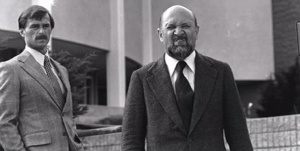
The twenty-one day shoot began in the spring of 1978 in South Pasadena. Due to the film supposedly being set at October, the crew were forced to create artificial leaves out of paper and colour them brown. Then, after each shot, they would have to collect them again in order to keep the costs down. Pumpkins would also be an issue, with them being out of season and difficult to find, yet one would be needed for the opening credits and several scenes throughout the film. Influenced by the styles of his favourite directors (Hitchcock, Howard Hawks, Brian De Palma), Carpenter’s movie would focus more on slow burning tension and well-orchestrated scares than simple gore and excessive violence, something which many of its imitators would largely ignore. The most impressive example of his skills as a filmmaker came with the opening scene, where the viewer would witness a brutal slaying of a naked girl from the killer’s point-of-view, all in one take. Intended as sort of homage to a scene from Orson Welles’ Touch of Evil, this impressive sequence was in fact three separate shots subtly spliced together into one. The punchline at the end being the revelation that the killer was not only the victim’s brother but also a child. Due to the strict regulations regarding minors on film sets, Hill was forced to double as Michael’s hands, seemingly small enough to prove convincing.
Halloween’s murders are relatively blood-free and suitably creepy, largely thanks to Castle’s underrated performance. When the movie was finally released on October 25, 1978, in Kansas City, it went largely unnoticed, due to Yablans being unable to put up much publicity. Yet, over the weeks, word-of-mouth got people talking and soon enough the screenings were selling out, resulting in the film eventually making close to $47 million in America alone by the end of its theatrical run. Its success convinced other producers and studios to follow suit and soon there were countless imitators, all with holiday themes and teenage victims (Friday the 13th, Prom Night, My Bloody Valentine), finally resulting in the inevitable Halloween 2, once again scripted by Carpenter and Hill. In 1980, the television rights were purchased by NBC for $4 million, though Carpenter would be asked to film additional scenes in order to fill out the two hour allotted time (including commercials), which would be shot during the making of the sequel. To date, there have been seven sequels, a remake (with its own sequel on the way), countless spoof, rip-offs, merchandise and pop culture references, making Halloween one of the most successful and iconic movies ever.
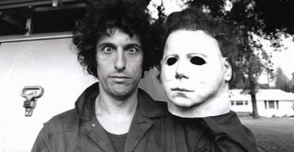

4 Responses to HE CAME HOME pt.1 – Halloween (1978)